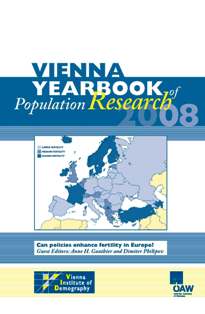
Vienna Yearbook of Population Research 2008, pp. 165-177, 2024/12/12

Population trends in recent years have prompted most European countries to
introduce or expand family support policies. In particular, the decline in fertility since the 1970s might be harmful in the long term. The number of children per family is often below the desired number declared in surveys. State support is intended to close the gap by lowering the barriers to having children. The increase
in divorce, separation and blended families, and the numbers of children born outside marriage and living with ‘lone’ parents, have also prompted countries to increase support for families, particularly for struggling families, whose children are the most vulnerable to poverty. At the same time, governments have sought to
encourage women’s workforce participation by ensuring that these policies enable parents to strike a better balance between work and family. Consequently, the
total investment of governments in benefits and services for families has strongly increased recently, reaching an average of 2.4% of GDP in 2003 in OECD countries, compared with 1.6% in 1980.